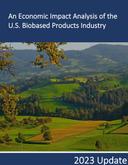Directions to a Bug-Tree Biomass Reminder
September 21, 2012
BY Luke Geiver
Take Reno Gulch Road north out of Hill City, S.D., until you hit Newton Fork Road. Take a right (if you’ve gone past the second cattle guard on Reno Gulch Road before turning you’ve gone too far) and drive roughly 500 feet. Park right there on the dusty ruts that form the U.S. Forest Service road and don’t worry that you’re blocking the way, you’re deep in the heart of the Black Hills mountain range, a place made famous by Mount Rushmore and Deadwood.
Before leaving your car, take a look around. To one side of the road there’s a sliver of a stream dotted with mud pools where the elk have gone to wallow and cool off during the draught plagued summer that turned the grass from green to the color of a yellow crayon. The ridge above the stream is littered with orange and fading green Aspens and a scattering of Ponderosa pines. To the other side, the ridge that comes down to the road is all dark timber, or at least as dark as the Black Hills can offer.
Advertisement
It’s just another 500 yards up the road from there, and if you are somehow linked to the woody biomass industry, then the walk is worth the hike. At the end of the walk there’s a long narrow opening that meanders up the ridge to the dark timber side of the road. I wouldn’t call it a meadow because the opening is not that. I would call it the ultimate reminder why project developers look for financing that can pay for woody biomass utilization, for infield drum chippers and walking-floor material-handling trucks.
That opening has been cleared, logged out. Unfortunately, the wood never made it back down the road to Reno Gulch Road and into Hill City where there’s a mill. The wood from that opening is piled 20 feet high in huge, and by huge I mean 200 yards long, piles right next to the dusty road. The ranchers in the area call them bug trees, but replacing bug with pine beetle would be more accurate. Nearly every Forest Service road features these bug tree piles, the result of pine beetle killed trees. The black timber in the Hills is now a mix of dark green and burnt brown that looks like a spilled drink of cappuccino.
Advertisement
Those slash piles will remain right there until the Forest Service has a chance to take a walking torch and stroll around the perimeter of the piles igniting the bottom limbs to engulf the biomass. That might happen this winter if there is enough snow, but if not, the piles will make it another year. I don’t know how long they have been there, maybe two years already, maybe more.
When it comes to pine beetle infected wood, there is a shelf life of course, and the slash piles near that road might already be unsuitable for most biomass applications. But, that scene in the Black Hills, of the Ponderosa pines dying and the slash piles near the road with no place to go, is if nothing else a stark reminder that investing in biomass makes sense. There is the job creation, there is the forest health and there is the environmental benefit of not burning the piles in the field. I would guess others could provide similar directions to places that looks like this, and I would also guess that those three benefits, job creation, forest health and a positive environmental impact, are all there too.
Related Stories
The U.S. Department of Energy Bioenergy Technologies Office (BETO) announced up to $23 million in funding to support research and development (R&D) of domestic chemicals and fuels from biomass and waste resources.
The U.S. DOE has announced its intent to issue funding to support high-impact research and development (R&D) projects in two priority areas: sustainable propane and renewable chemicals and algal system cultivation and preprocessing.
Sens. Sherrod Brown, D-Ohio, and Pete Ricketts, R-Neb., in August introduced the Renewable Chemicals Act, a bill that aims to create a tax credit to support the production of biobased chemicals.
The Chemical Catalysis for Bioenergy Consortium, a consortium of the U.S. DOE’s Bioenergy Technologies Office, has launched an effort that aims to gather community input on the development of new biomass processing facilities.
USDA on March 8 celebrated the second annual National Biobased Products Day, a celebration to raise public awareness of biobased products, their benefits and their contributions to the U.S. economy and rural communities.
Upcoming Events










